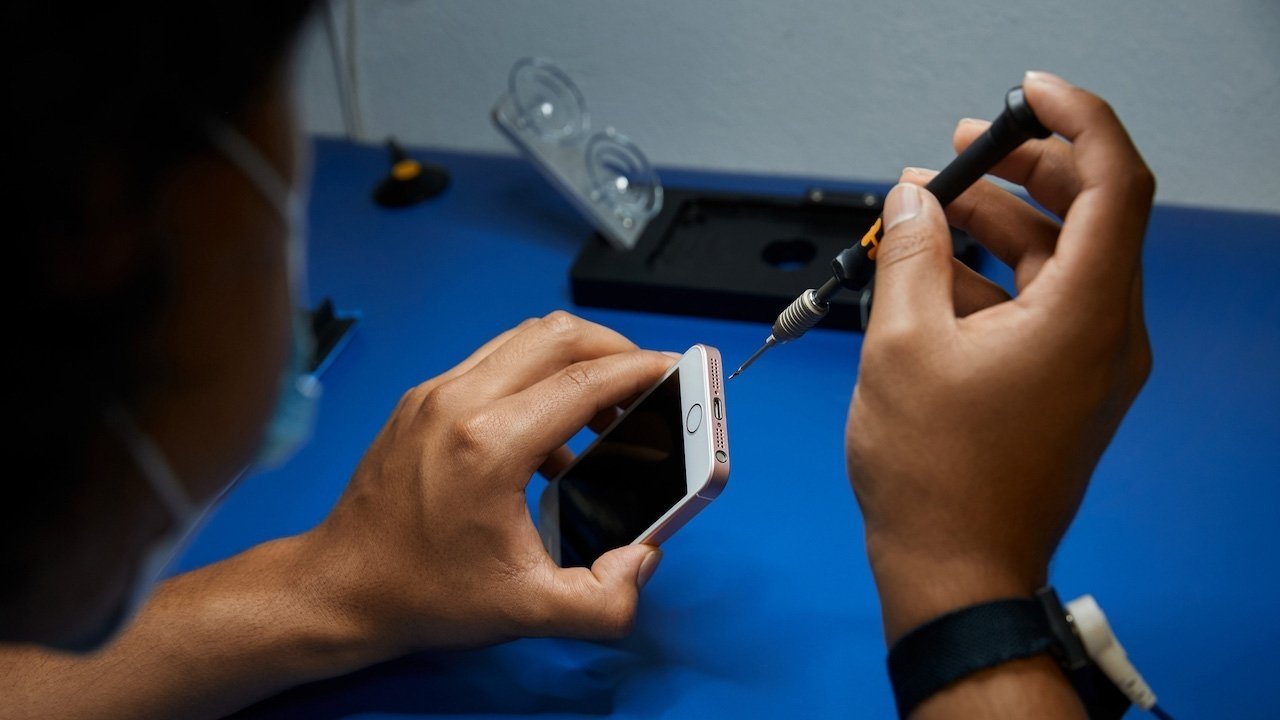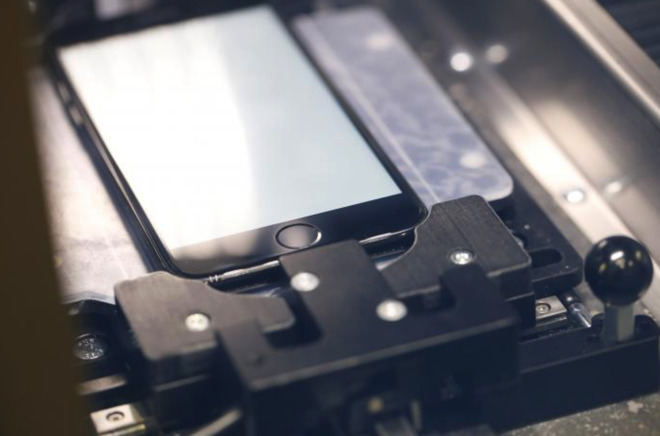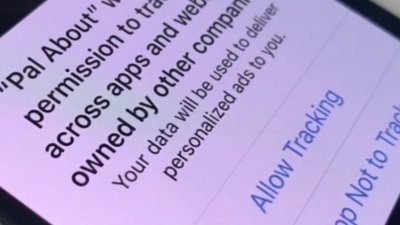The basic tenets of the Right to Repair movement are sound, but lRight to Repair mavens and corporations need to figure out exactly what it means before ill-informed public officials start chiming in on how the fix the issue.
It doesn't take much to find a hot take about what Right to Repair means, and you're reading another one. These definitions range on Capitol Hill and the Internet from requiring manufacturers to stop using special screws and a user-replaceable battery mandate, to the very light-touch (and existing law) of a repair on an unrelated component not voiding a device's entire warranty.
Like Section 230 reform debates, though, nobody seems to agree on precisely what is involved in Right to Repair. Microsoft, Apple, Sony, and more would like to see as narrow a definition as possible and, depending on where you look. Others want everything blown wide open, with schematics, repair parts, and more available to anybody who asks.
As devices have gotten smaller and thinner, Apple's engineering choices have made them more reliable, with fewer devices coming in for service per capita. But, at the same time, it's dramatically increased the level of skill it takes to repair them.
Right to Repair as a general concept can work. It can be beneficial to Apple and consumers simultaneously. It's just not going to go anyplace until there's a clear definition.
Right to Repair origin story
"Right to Repair" as a term and a movement popped up about 15 years ago, and has moved into the public consciousness more and more over the last five years. Over that 15 years, manufacturers have increasingly dismissed any call for user repairs and for allowing "unauthorized" repair centers that have not gone through vendor-supplied training to perform fixes.
At its core, "Right to Repair" argues that consumers should have the ability to make repairs to devices and hardware they own without resorting to using a strictly controlled process or materials limited to the device's manufacturer.
With that thin and light device migration that most of the user base outside the AppleInsider faithful demands, large assemblies of parts like storage have increasingly become custom to a device, meaning the only real source of getting a legitimate replacement is through the manufacturer's own service channels. They are not typically open for use by consumers nor by third-party repair centers that haven't gone through the prerequisite training nor are willing to adhere to the manufacturer's agreements. As such, it effectively means only authorized repair outfits and the company's own service network can acquire "genuine" parts.
As with everything else these days, opinions are polarized. Strong Right to Repair advocates of call for manufacturers to open up their supplies of components to consumers and any repair center and offer up support documentation and circuitry diagrams, so those attempting to fix something at home have everything they need to do it.
There are organized and grass-roots efforts by Louis Rossmann to get legislators to pass Right to Repair legislation on the federal and state level. And now, there's a call by the US Federal Trade Commission to look at it.
Likewise, there are enormous lobbyist dollars spent annually to kill the efforts or water them down so that they're completely ineffective.
Right to Repair discussions are being hampered by the extreme cases
The main arguments against implementing the legislation fall into both the difficulty of repairing the goods and a perhaps specious one about public safety.
The complex nature of modern electronics means a repair may require the use of specialist tools — or need a specific base-level knowledge which has escalated over time as devices have become more complex — to successfully deal with an issue. Companies, including Apple, note that an attempted repair could potentially result in damage to a replacement component and other components within a device that may have been functioning properly beforehand.
Some of us here at AppleInsider have seen this damage first-hand. It isn't pretty. But, even in the heyday of repair, it wasn't all that common.
Apple has used the public safety argument as well. When it fought a Right to Repair bill in May of 2019 in California, it claimed an inexperienced consumer could easily hurt themselves with the complex hardware. As an example, the lobbyists suggested that an accidental puncturing of the lithium-ion battery could be quite a health hazard.
The company isn't wrong in this regard as inherently flammable batteries have caused problems even inside Apple Stores. Ideally, though, a customer given adequate repair parts and documentation will have everything they need to be safe.
Apple's take on batteries being why it isn't standing behind Right to Repair on smartphones appeals to lawmakers who continuously demonstrate that they really don't have any idea about technology more advanced than a Radio Shack car phone from 1986. Cellphone batteries are dangerous at some level, but they aren't runaway nuclear reactions — and they are indeed safe enough for millions of us to carry in our pockets without thinking twice about it.
All self-repair has some level of danger to the repairer or device. For example, if you're fixing your refrigerator, you can puncture a heat exchanger, leaking out all of your coolant. Likewise, a car on a jack can fall, damaging the car, or crushing delicate human parts underneath it.
If you've got the confidence to repair your $1000 and up smartphone yourself, you should have some level of self-awareness to know that stabbing the battery with a screwdriver is a bad thing. And, you should understand that any repair that you, yourself, have done, if botched, voids your warranty.
You shouldn't expect to be able to effectively bring a box of parts into Apple and get a repair if you screwed it up — and any definition of Right to Repair shouldn't mandate that Apple needs to.
If you play the game, you take your chances.
Harder repairs, in a more challenging security environment
This isn't 2000. Engineering and design principles have changed, and external Internet-delivered and data-stealing threats are more common than ever.
Apple's hardware and software combinations are increasingly being designed to counter threats, which has carry-over impacts on repair. To that end, we've had the Secure Enclave in the iPhone and iPad for years, plus and the T1, T2, and Apple Silicon chips controlling biometric authentication and other features.
Apple has what has been identified as a "Horizon" machine for Secure Enclave association with Touch ID sensors and Face ID. There is a similar calibration process in software for the T1, T2, and Apple Silicon that, theoretically, can block repairs — but years after this was postulated, it appears that isn't the case yet.
Unless Apple can guarantee that Horizon and a Secure Enclave association are complete "Black Box" solutions, with no way to peer inside and glean how Apple keeps devices secure, Apple should keep them close to the vest. Keep those limited to Apple-authorized shops and the Genius Bars.
But, there are lots of other repairs that don't — or shouldn't — need Secure Enclave association in any way, and there's no real reason for Apple to restrict repair part access to those.
A common refrain about Apple's repair process and why it may be restricting those parts is that it is a money-maker for the company. It's easy to guess that, primarily if you've ever handled a repair bill by Apple, the company maintains that it isn't the case.
Apple testified before congress in late 2019 that for over a decade, Apple had been losing money on its repair business. It didn't elaborate on how that figure was reached, of course.
Beyond the threats, Apple hardware has changed
The days of Apple using SATA drives on its portable line are long over, and it never used any kind of user-replaceable storage on the iPhone or iPad line. The last vestige of slotted storage died at the consumer level with the M1 Mac but still exists in the Mac Pro. It has also chosen to use soldered RAM in nearly everything but that same Mac Pro instead of making the computer a millimeter or two thicker.
These design choices that it made to appeal to a large audience have impacted consumer-level repairability as well. It isn't as simple as buying a hard drive off the shelf at Microcenter or an SSD off Amazon and tossing it in a broken machine.
Two billion devices are a lot to maintain
Apple's own numbers say that there are 2 billion devices in daily use floating around. That's a lot of devices that need service per year, and if you live in a populous area, you know that you can see week-long waits to get a Genius Bar appointment. Even now, seven months after the teeth of the Coronavirus threat in the US was on display to us all, these appointments can still take a long time between when you schedule and when you can get in.
We've continued to speak with service suppliers, both Apple-blessed and non. As it has been for a decade, a high proportion of these repairs are screens and non-security-related fixes. The authorized stores are flooded with them, making the experience worse for not just the Apple-loyal because of long turn-around times, but the "device as appliance" crowd that just need to get Kimmy's birthday pictures off the iPhone after the clown at the party accidentally smashed the phone.
Getting iffy parts to turn these repairs around faster or cheaper isn't ideal for anybody, repair-seeker or shop alike. There needs to be something in-between full Apple-authorized service shops and unauthorized shops that are forced to turn to shady Chinese sellers or cannibalized parts from eBay.
Right to Repair doesn't mean that you have to do it yourself. Apple retail will always have Genius Bars. And, properly implemented, it may even take some of the heat off them, making for a better consumer experience.
Nuanced discussions are the hardest and most valuable ones to have
I wholeheartedly approve of some level of Right to Repair protection for consumers — but not a full door-opening. I say this, even having done circuit-level repairs independently in the distant past, hampered by lack of access diagrams. I have also spent a fair amount of time in service bays for an assortment of Apple dealers over the years — but never in an Apple Store itself. Good news, though — I trained a fair amount of folks that are there now.
The Right to Repair discussion is complex and full of nuance — almost impossibly so. This is complicated by the loudest voices talking about it, convinced that they are absolutely correct in every regard and fully justified in their convictions on the matter.
But, like everything else, the extreme sides of a discussion are never right for the whole. So, the real answer that will appeal to the most people and do the most good for everybody is somewhere in between. It lies in that middle 50% range, outside the 25% extremes on either side of the line.
This is why Right to Repair needs a definition, and it needs to be in that middle 50%. The corporations will never go for a full opening of supply parts, gear, tools, and documentation. Instead, they will spend millions of dollars and slay hundreds of column-inches of text in studies and press releases to stop it. Money talks and politicians will listen to who's paying the tab — regardless of what the FTC says it wants to do about it.
I'd like to see a supply of quality parts not related to security of a device readily available to a more significant subset of the third-party shops than have them now. I'd like to see those thermal sensors, screens, case glass, case parts, buttons, keyboards, batteries, and all permutations of these available to repairers. I'd like there to be clear delineations and legal protections for the sale for Apple, Microsoft, Sony, and others, when some dingbat decides that a crowbar works just as well as a plastic spudger.
And, to further that end, we'd also like to see releases of at least some repair procedures plus diagrams for the circuit-level folks. Sure, this isn't basic Intel hardware anymore, but it's not like we're asking for a logic diagram of Secure Enclave chips here.
Once more, with feeling!
Apple has historically leveraged governmental officials that don't know what they're talking about as it pertains to hardware, have no clue about technology, and continue to prove that they like it that way. That's a shame, and spiking the issue here and there by yelling about potential dangers to the customers won't make it go away.
Repair proponents, even the most shrill, are right about the need for some level of Right to Repair, but mostly skip over security concerns. At the same time, they generally vastly over-estimate who will do it and who will want to do it.
And here we go again, with the FTC promising to delve into the issue without discussing how or what they plan to do.
Based on prior polling that we did in 2016, a half-decade closer to the heyday of self-repair, about one in 20 users in 2016 felt comfortable doing any technological repairs. Even fewer wanted to do so on an iPhone. This is quite a gap, and it's only worsened over the last five years as the install base has grown and more "computer as appliance" folks jump in.
And like everything else, the gaps between the Right to Repair folks, the corporations involved, and the governments of the world are insurmountable unless the three "parties" involved come to a consensus on what exactly it means before the bigger discussion of legislation begins in earnest.
We're not expecting it this time, though. Without that agreement on the definition, any kind of movement, governmental or otherwise, will die on the vine.
That is, it'll be dead until it's politically expedient for the governmental types to bring it up and again take no action on it.
 Mike Wuerthele
Mike Wuerthele








-m.jpg)






 William Gallagher
William Gallagher
 Brian Patterson
Brian Patterson
 Charles Martin
Charles Martin


 Malcolm Owen
Malcolm Owen

 Christine McKee
Christine McKee









18 Comments
Now that Right to Repair is a thing, Apple could help define what it means by embracing it and providing parts, tools and documentation to people who want to repair the devices they own. Apple could also immediately stop lobbying against Right to Repair in the US and all other countries.
Having consumers repair their own devices (or even change out battery) is a disaster in the making. On multiple fronts: safety, device damage, IP theft, design changes to accommodate (thicker, less waterproofing, screws), device reliability
What is so hard about having Apple or certified center fix a device? It really is not complicated
I mentioned on another article on the same subject earlier today that I’ve come around to agreeing with Right to Repair, to a plint. Our devices are for the most part boxes containing modules. A battery module, a motherboard module, a screen module and so forth. I agree with the article that it’s unlikely, indeed a bit silly, to demand schematics to allow people to do their own board level repairs. Almost no one is going to want to do that. On the other hand Apple and other’s insistence that the devices are sealed for your protection is too much as well.
If battery and screen replacements were easy and available at more 3rd party shops, then I suspect most of this Right to Repair hoopla would die away. Anything above that should go to Apple, but that would cover the vast majority of repairs people want.